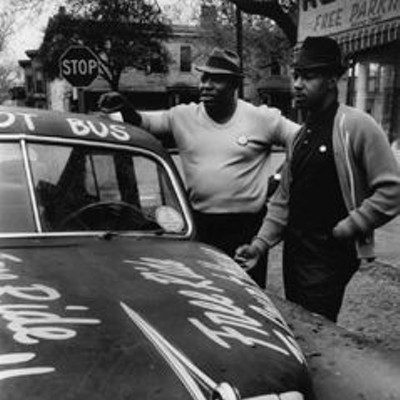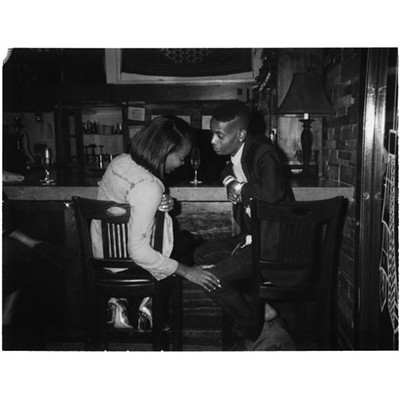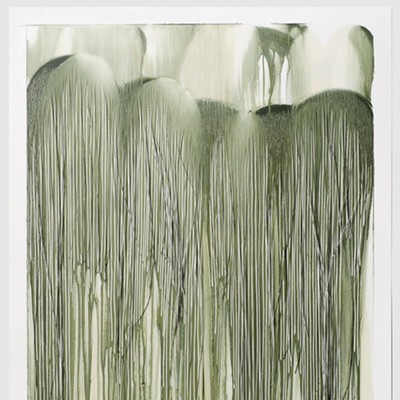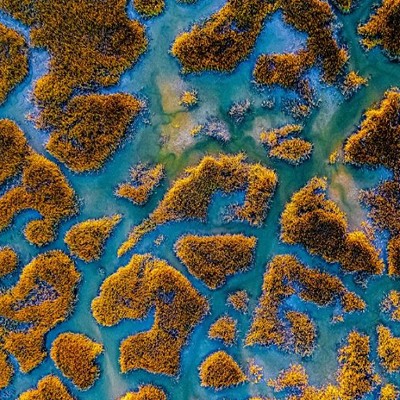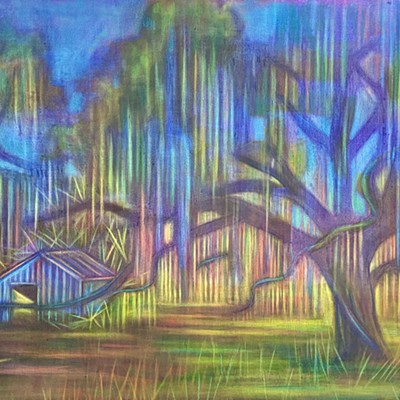As you almost certainly already know from the vast amount of attention on the subject, 50 years ago this week President John F. Kennedy was assassinated in Dallas, supposedly by lone gunman Lee Harvey Oswald (though a majority of Americans to this day believe more than one man was involved).
In a remarkably timely show, the Telfair Museums bring a little-known series of Andy Warhol prints concerning the assassination and its aftermath.
Most people without an art background consider Warhol just the soup can guy. But he shared something with JFK that not many are aware of: Both were devout Catholics.
"Warhol/JFK" is up at the Jepson Center for the Arts through March 2014, with several concurrent events.
We spoke to Telfair Museums Executive Director Lisa Grove about the show last week.
What should people expect to see at this exhibit?
Lisa Grove: It centers on the "Flash" portfolio, a group of 11 works Warhol created. The title of course comes from "news flash," the way America learned of the assassination, breaking into regular programming in the middle of the day.
Warhol started the portfolio shortly after the assassination, but didn't complete it until after 1968. It's not only about the event, but the aftermath and ongoing memory and what America was wrestling with in the ensuing years.
It's a series of 11 prints, with very bright colors. They're very attractive on a surface basis, but as get you closer you see that in each one Warhol has overlaid images from the media.
For example, one contains a small presidential seal. You get really close and you see three bullet holes in it.
It's a focused show. It allows us to zero in and highlight a single really interesting aspect of Warhol's work, two key parts of Warhol's output. It's not a huge show, but these works are really important because they're among the first where he really intended to be a serious artist, dealing with serious issues and commentary.
How did you actually work out getting this exhibit at the perfect time?
Lisa Grove: It's from the private collection of Herbert Brito, a former SCAD professor. We knew of him because, before my time at the Telfair, he had been kind enough to host a William Jay Society event at his home.
Another piece he's lent is an image of Jacqueline Kennedy, "Jackie II." She appears repetitively, almost like in a film. Warhol saw her as this iconic symbol representing the nation's sorrow.
When we first started talking to the collector, we talked about 2014 or 2015. At some point I said, "Wait, do you realize it's almost the 50th anniversary of the assassination?" We connected the dots and decided we should do this now.
It's something of a departure. Does this represent a newer direction you'd like to take the Telfair?
Lisa Grove: Artists have unique ways of drawing attention to society. For us as an art museum we're always looking to find a way to connect. Using a particular artists' point of view is a way to reach new audiences. We always want to make the museum as relevant as it needs to be.
Anytime we can connect to current culture we become more relevant, and it's a more interesting opportunity to be a little provocative, to give people something that's exciting as well. We want to make people think.
Certainly an opportunity to show works by Andy Warhol is something we're very excited about. To show a big name like Warhol, but an aspect of his work that's not so well-known, allows us to really meet our mission.
Warhol and JFK are in some ways not compatible at all, but in other ways it's a great match.
Lisa Grove: Warhol is often seen as a lightweight artist most well known for soup cans and celebrity portraits. "Lightweight" in the sense of his subject matter. He began his career as a graphic designer for department stores.
This of course is a very heavy subject. This was really his first moment when he went out as a serious artist. It's a heavier subject matter than his more popular work, clearly more thought-provoking with more serious commentary.
The other thing interesting, of course, is that Warhol and JFK were peers. They were similar ages, they were both on the cusp of a new modern age, especially in media. JFK was considered the first "TV president." Andy Warhol understood that concept, which he built on with his whole idea of everyone getting their 15 minutes of fame.
He anticipated a lot of what we have today with celebrity culture. He was able to see in JFK and Jackie the moment when TV brought what had before been a mostly political process and took it right into your living room.
It was something really compelling. Here we have Warhol, one of the top American artists of all time, delving into one of the most important cultural moments in American history.
It really is the time when politics and the media and pop culture all began intertwining.
Lisa Grove: Sure. I mean, Marilyn Monroe sang "Happy Birthday" to John F. Kennedy. That was definitely the time when you began to see the blurred lines between Hollywood, pop culture and politics.
As for the assassination itself, there had been others but of course they weren't covered in the press the same way. Until JFK you didn't have photos or video of it happening. Then there was the killing of Oswald on live TV soon afterward.
It's been 50 years and people never seem to get tired of this. It's endlessly fascinating, literally.
Lisa Grove: It's a rich area to mine. Certainly political scholars and American historians continue to look at the impact of his presidency and the way this event really changed the country. There's always the question of had he not been assassinated would he remembered in the same way?
A lot of people come and go in that office, do some things and move on. Would he be regarded the same way had he not had this dramatic end?




